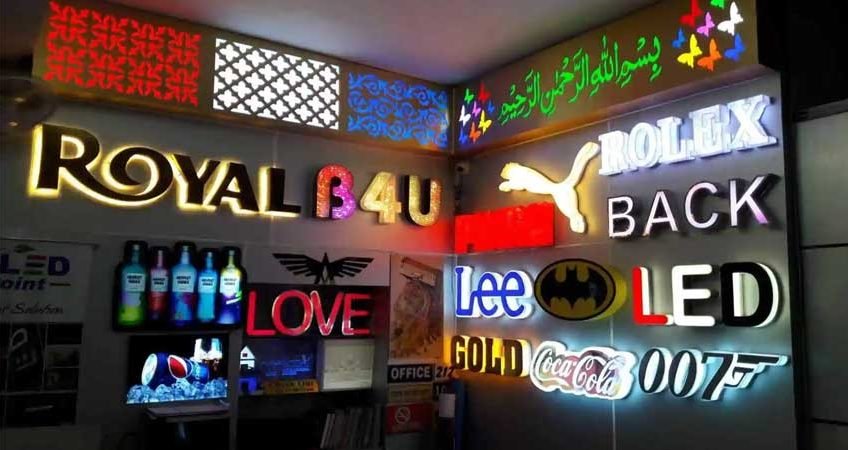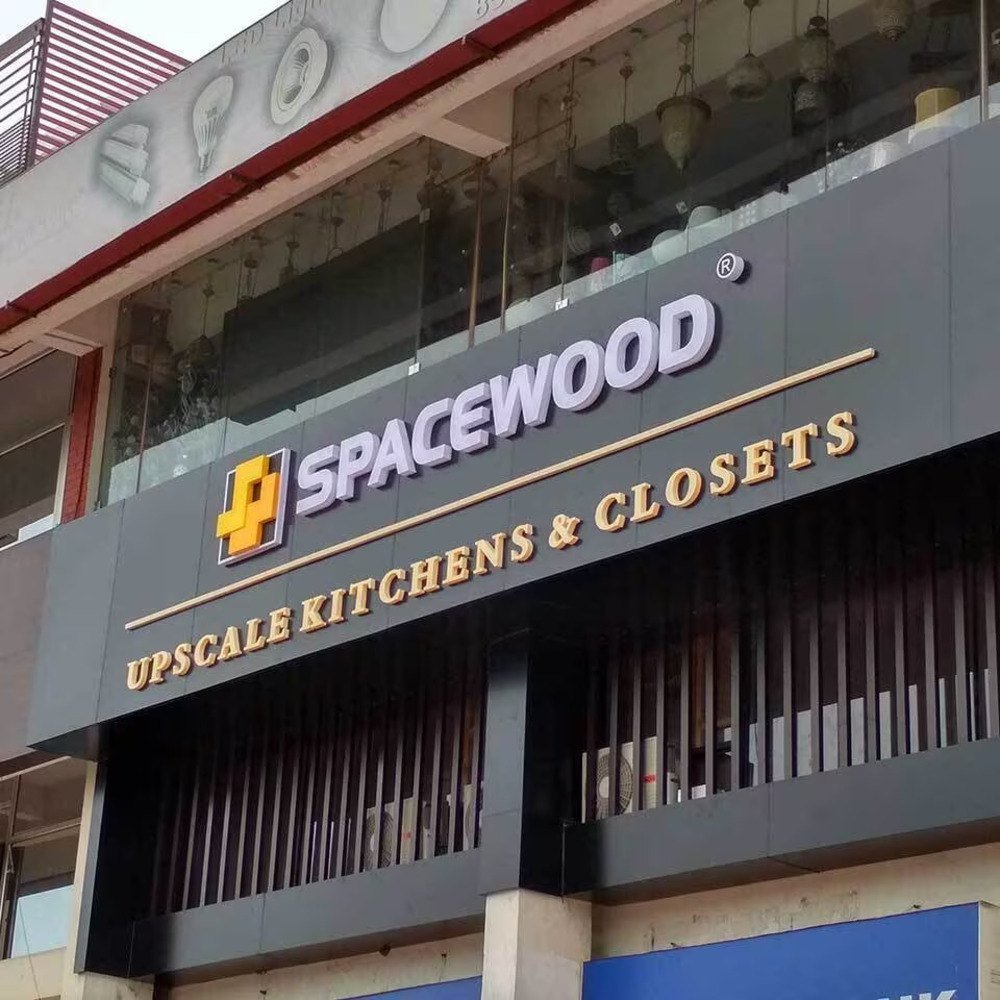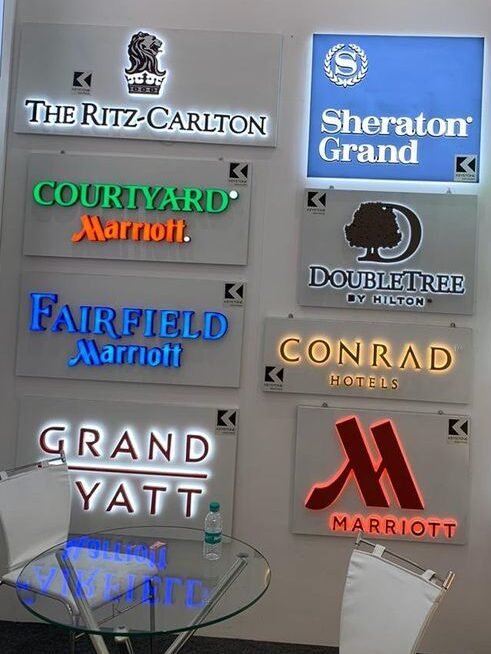
Table of Contents
On a narrow lane, right beside a florist’s corner, there’s a signage board made of old wood and hand-painted letters that reads, “Blooms & Petals Since 1982.” It doesn’t blink or flash. It doesn’t take up half the street. But somehow, it’s the kind of sign that draws people in—not because it shouts, but because it feels real.
That’s the thing about signage. It’s not just a board. It’s a brand’s first handshake with the world. It tells a story before a salesperson even says a word. And behind every good sign is a careful choice of material, size, and a bit of custom flair.
Let’s walk through that world, from raw material to personalized masterpiece.
Materials That Matter signage board
Every business is different. A premium jewellery brand won’t choose the same signage material as a roadside food stall. What goes into a sign depends on where it lives, what it needs to say, and how long it’s expected to stand strong.
1. Acrylic
Acrylic is a smooth, glossy material that looks like glass but is much lighter and safer. It’s very popular for indoor signage boards, like reception areas, salons, retail showrooms, and office nameplates.
- Best for: Backlit signs, 3D letter signs, and logo boards.
- Sizes available: Sheets usually come in 4ft x 8ft, but can be cut to any custom size.
- Customization: Available in various colors, can be laser-cut into logos, and can be backlit with LED lights.
2. Sunboard (PVC Foam Board)
This is a lightweight material with a smooth finish, often used for printing high-quality visuals. It’s budget-friendly and works well indoors.
- Best for: Posters, in-store branding, temporary promotions.
- Sizes available: Comes in sheets like 6ft x 4ft, 8ft x 4ft. Thickness ranges from 3mm to 10mm.
- Customization: Can be printed in any design or color, cut to shape, and easily mounted on walls.
3. Vinyl Prints
Vinyl is a thin, flexible, sticker-like material that can be pasted on various surfaces glass, metal, wood, and plastic.
- Best for: Window displays, wall wraps, vehicle branding.
- Sizes available: Printed on rolls that can be stretched to custom lengths and widths.
- Customization: Fully printable, waterproof, and available in glossy or matte finish.
4. ACP (Aluminium Composite Panel)

ACP is a strong, weather-resistant material with a metallic finish. It’s widely used for outdoor signage boards.
- Best for: Shop front boards, entrance signs, and outdoor hoardings.
- Sizes available: Standard sheets are 8ft x 4ft, but can be custom-cut.
- Customization: Available in many colors, can be used with vinyl pasting or acrylic letters on top.
5. Metal (Steel/Aluminum)
Metal signs are known for their durability and premium finish. They are mostly used for long-term signage or branding for corporate offices.
- Best for: Office entrances, industrial signage boards, and nameplates.
- Sizes available: Fully customizable depending on the requirement.
- Customization: Can be cut, engraved, or printed; available in brushed, matte, or glossy finish.
6. LED & Backlit Boards
These are signs that glow either from behind (backlit) or around the letters (edge-lit). They’re made using acrylic or ACP along with LED lighting.
- Best for: 24×7 visibility used in showrooms, restaurants, clinics, and salons.
- Sizes available: Fully customized based on shop size or wall space.
- Customization: Fonts, light colors, logo shapes—everything can be made to match the brand.
7. Wood
Though not as common in commercial areas, wooden signage brings a warm, rustic feel. It’s often used by boutique stores, cafes, or creative spaces.
- Best for: Vintage or handcrafted brands.
- Sizes available: Custom-made depending on the design.
- Customization: Carved, painted, or engraved; can be polished or painted in natural or bold colors.
Sized to Fit, Not Just Fill

Signage Boards isn’t about going big. It’s about being right. A 20-foot board won’t help if your customer can’t connect with it.
For every type of sign, there are standard sheet sizes like 4×8 ft, 6×4 ft, or custom laser-cut shapes. But more important than the number is the placement. A reception sign needs to fit the wall behind the desk. A roadside board needs to be read from 100 feet away. A metro pillar wrap should be tall, crisp, and uniform.
Every space tells its own story, and the sign must fit right into that plot.
Customization: Where Signs Become Personal
Now comes the fun part. The part where your brand breathes through the signage board.
Customization is more than adding your logo. It’s about making sure the sign sounds like your brand, even when it doesn’t say a word.
Here’s how businesses make their signage their own:
- Colors that match brand identity (not just red, but your red)
- Fonts that speak the tone—playful, bold, classy, or creative
- Lighting styles—like backlit, edge-lit, or halo effects
- Shapes—circles, custom-cut logos, or layered 3D letters
- Textures and finishes—matte, glossy, brushed metal, woodgrain, or even rustic paint
It’s no longer just a flat board with names. It’s a brand canvas.
A few months ago, a local craftsman opened a tiny design studio. No advertisements. No social media. Just a simple hanging board with his name, logo, and tagline carved on wood, mounted by a soft spotlight. Within weeks, people began walking in drawn by curiosity, by the charm of that board.
He later said, “I didn’t need to speak much. The sign did the talking.”
That’s what a good signage board does. It doesn’t shout. It invites. It explains. It reminds.
Whether you’re a new brand finding its voice or an old one refreshing its face, the right signage board made with the right material, in the right size, and personalized with heart will never go unnoticed.
Because in a world full of noise, sometimes a well-made sign is the quiet difference.
📞 Get in touch today and let’s take your branding to the next level.
📧 Email us at: sales@acmeadvertiser.com
🌐 Visit: acmeadvertiser.com
Expand your network with us, let’s connect on LinkedIn

